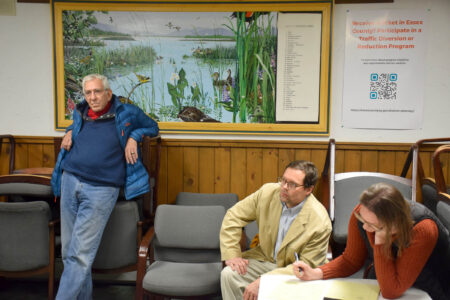Stevenson Society aims to save author Robert Louis Stevenson’s home for his 175th birthday
SARANAC LAKE — The Stevenson Society of America will hold a celebration for Robert Louis Stevenson’s 175th birthday on Thursday, Nov. 13, from 6:30 to 8:30 p.m. at the Saranac Lake Free Library. The Society is also working to reinvigorate the legacy of the “Treasure Island” and “Dr. Jekyll and Mr. Hyde” author and restore his former home — an important literary site in urgent need of repairs.
“We’re anticipating the largest and most lively Stevenson Society event since the 1920s,” said Trenton Olsen, Society president and Stevenson scholar.
New York Times bestselling author Tim Rowland will give a presentation titled “Treasure Island: The Unexpected Riches of the Stevenson Cottage and the Family who Saved Them.” The event will also feature a dramatic reading from Pendragon Theatre, live bagpipe music to honor the Scottish author, and toasts by Olsen, Historic Saranac Lake, and the Adirondack Center for Writing. Stevenson-themed refreshments will be served, including birthday cake, and RiverTrail Beerworks will provide Treasure Island Ale.
In addition to the evening event at the library, the Stevenson Cottage Museum will celebrate the day with free admission at the author’s former home from 9 to 5 p.m. on Nov. 13.
“Despite its rich history and extraordinary collection, many community members have never visited the Stevenson Cottage,” Olsen said, “so this is a great chance to experience it.”
Stevenson lived in Saranac Lake from 1887 to 1888. Suffering from chronic pulmonary illness, he came for its new sanatorium, and his fame helped propel its growth.
“Stevenson’s six months in Saranac Lake were pivotal for him personally and professionally,” Olsen said.
Stevenson’s health improved and he wrote two novels and some of his best-known essays, earning more than he ever had despite pervasive American pirating of his work. At the cottage, Stevenson planned his greatest adventure: a South Pacific voyage that led him to Samoa for his final years.
The Stevenson Society of America formed in 1915 and opened his Adirondack residence as a museum the following year — the world’s first site dedicated to the author. Organizers included luminaries such as Associated Press founder Charles M. Palmer, William Morris of the namesake talent agency and Mount Rushmore sculptor Gutzon Borglum. Stevenson’s family members and friends joined the society and donated most of its vast collection: from the author’s infant cap to the last pen he ever used.
The Cottage Museum fell on hard times in the Great Depression and never financially recovered. It’s been preserved and kept open by a single family of volunteer resident curator-caretakers for more than 70 years. Following his father and grandparents, Mike Delahant took on this role in 1980, expecting only to stay for a short time.
“But 45 years later, here I am,” he said. “I, too, seem to have fallen under the Stevenson spell.”
Olsen, a literature professor at Brigham Young University-Idaho who recently edited the first comprehensive collection of Stevenson’s essays ever published, took over as society head in 2023 and saw danger looming. The all-volunteer museum lacks the funding for essential building repairs, let alone the means to eventually replace the 74-year-old Delahant with hired staff.
“Failing to preserve the cottage would be an immense loss for literary history,” Olsen said. “We’re committed to securing its future.”
In 2024, the Stevenson Cottage was one of only 71 institutions in America to receive funding for an initial preservation assessment from the federal Institute of Museum and Library Services.
“The cottage is in extremely poor condition,” the resulting report stated, “and it is critical that efforts be initiated to protect the structure.”
The board has since replaced a failing roof and secured state and regional grants for additional architectural study and building repairs. All told, however, the necessary restoration of the cottage, built in 1855 and listed on the National Register of Historic Places, will cost approximately $2 million: far beyond what the small group of volunteers has managed to raise.
For new board member and leading American essayist Phillip Lopate, the former home of a favorite writer is well worth preserving.
“I’ve been to a lot of writers’ houses in my life, and this is one of the better ones.” Noting its “tremendous potential,” Lopate said. “I hope it will begin to draw donors to make it everything it could be.”
More information can be found at www.rlscottagemuseum.org.



